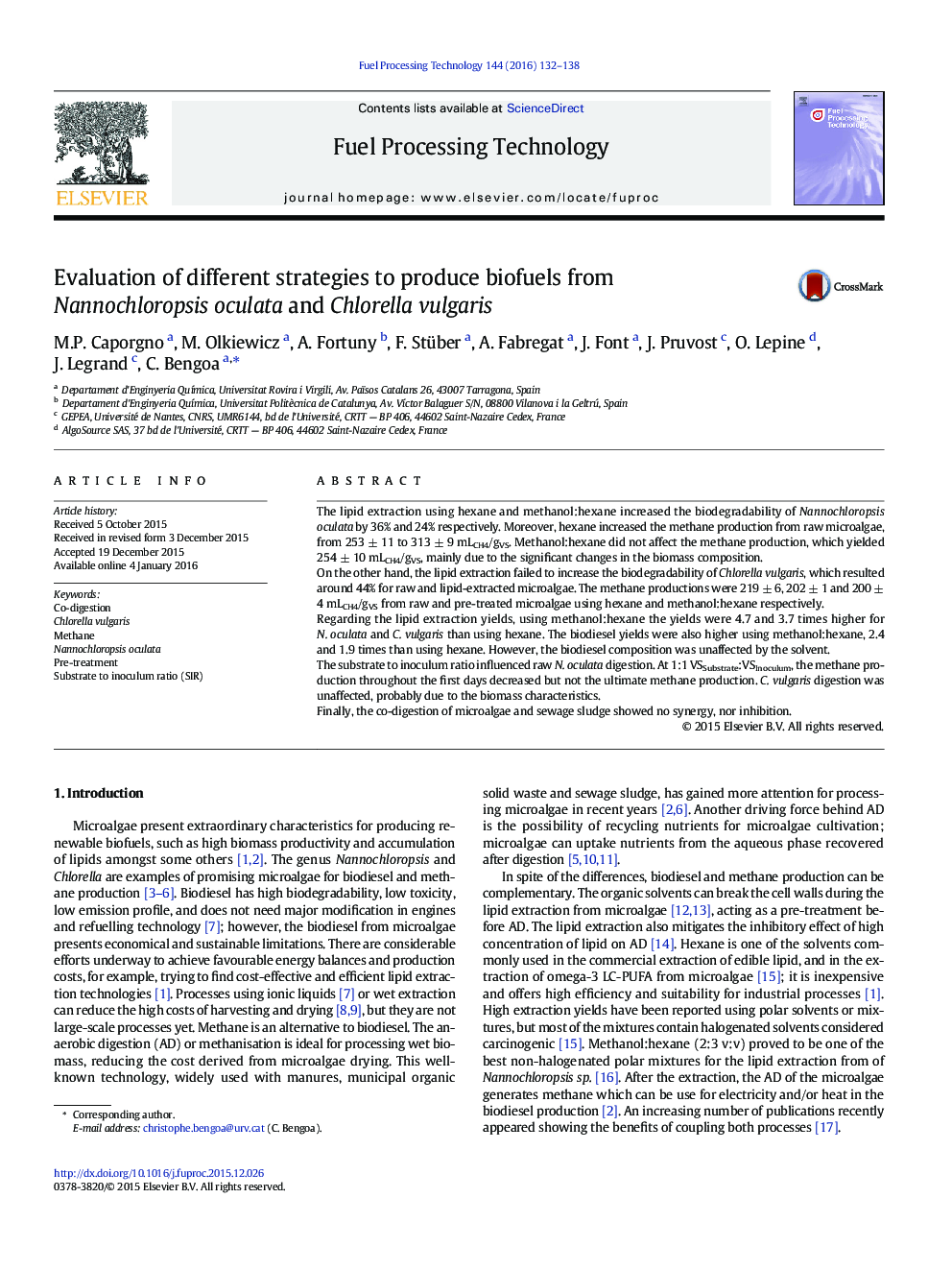| کد مقاله | کد نشریه | سال انتشار | مقاله انگلیسی | نسخه تمام متن |
|---|---|---|---|---|
| 209265 | 461664 | 2016 | 7 صفحه PDF | دانلود رایگان |

• Organic solvents influence lipid and biodiesel yields, and waste biodegradability.
• Lipid-extracted microalgae reach similar or higher CH4 yields than raw microalgae.
• The SIR hardly affects the CH4 production from N. oculata and C. vulgaris.
• Microalgae co-digestion with sewage sludge has no antagonistic effects.
The lipid extraction using hexane and methanol:hexane increased the biodegradability of Nannochloropsis oculata by 36% and 24% respectively. Moreover, hexane increased the methane production from raw microalgae, from 253 ± 11 to 313 ± 9 mLCH4/gVS. Methanol:hexane did not affect the methane production, which yielded 254 ± 10 mLCH4/gVS, mainly due to the significant changes in the biomass composition.On the other hand, the lipid extraction failed to increase the biodegradability of Chlorella vulgaris, which resulted around 44% for raw and lipid-extracted microalgae. The methane productions were 219 ± 6, 202 ± 1 and 200 ± 4 mLCH4/gVS from raw and pre-treated microalgae using hexane and methanol:hexane respectively.Regarding the lipid extraction yields, using methanol:hexane the yields were 4.7 and 3.7 times higher for N. oculata and C. vulgaris than using hexane. The biodiesel yields were also higher using methanol:hexane, 2.4 and 1.9 times than using hexane. However, the biodiesel composition was unaffected by the solvent.The substrate to inoculum ratio influenced raw N. oculata digestion. At 1:1 VSSubstrate:VSInoculum, the methane production throughout the first days decreased but not the ultimate methane production. C. vulgaris digestion was unaffected, probably due to the biomass characteristics.Finally, the co-digestion of microalgae and sewage sludge showed no synergy, nor inhibition.
Figure optionsDownload as PowerPoint slide
Journal: Fuel Processing Technology - Volume 144, April 2016, Pages 132–138